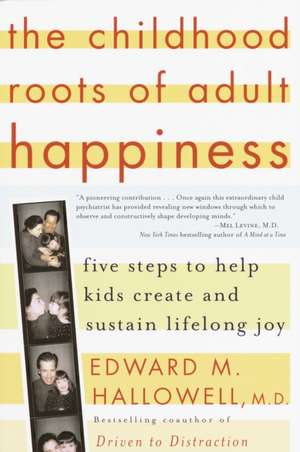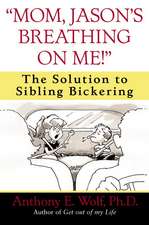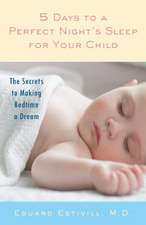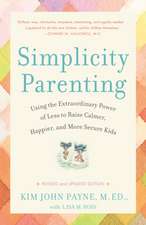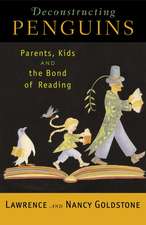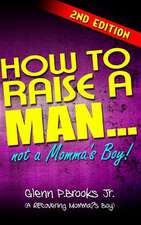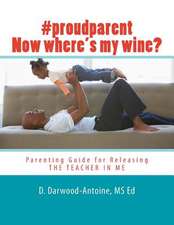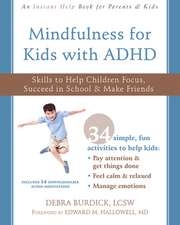The Childhood Roots of Adult Happiness: Five Steps to Help Kids Create and Sustain Lifelong Joy
Autor Edward M. Hallowellen Limba Engleză Paperback – 31 iul 2003
As Dr. Hallowell argues, we don’t need statistical studies or complicated expert opinions to raise children. What we do need is love, wonder, and the confidence to trust our instincts. This inspiring book outlines a 5-step plan that all parents can use in giving their children the gift of happiness that will last a lifetime. Connection, play, practice, mastery, and recognition: as fundamental as these five concepts are, they hold the key to raising children with healthy self-esteem, moral awareness, and spiritual values. Dr. Hallowell explores each step in depth and shows how they work together to foster trust, respect, and joy.
Privilege, wealth, and expensive “extras” are not necessary for happiness—there are many stories here of children who have overcome poverty, abandonment, and shocking deprivation to find true fulfillment. Dr. Hallowell encourages us as parents to reconnect with the moments in our own childhoods that made a difference; he explores the impact of genetics and environmental factors on the inner workings of a child’s mind; and he discusses how activities like team sports, community service, religious observance, and household chores can foster a child’s sense of mastery.
Like the works of T. Berry Brazelton and Benjamin Spock, The Childhood Roots of Adult Happiness is infused with the wisdom and humanity of a doctor who truly loves and understands children. Writing with the warmth of a friend and the authority of an expert, Dr. Hallowell gives us a book at once practical and exuberant, joyous and informative, eye-opening and reassuring. Ultimately, this book is a celebration of childhood and of the magic that happens between parents and the children they love.
From the Hardcover edition.
Preț: 101.17 lei
Nou
Puncte Express: 152
Preț estimativ în valută:
19.36€ • 20.14$ • 15.98£
19.36€ • 20.14$ • 15.98£
Carte disponibilă
Livrare economică 24 martie-07 aprilie
Preluare comenzi: 021 569.72.76
Specificații
ISBN-13: 9780345442338
ISBN-10: 0345442334
Pagini: 256
Dimensiuni: 140 x 209 x 14 mm
Greutate: 0.22 kg
Ediția:Trade Pbk.
Editura: BALLANTINE BOOKS
ISBN-10: 0345442334
Pagini: 256
Dimensiuni: 140 x 209 x 14 mm
Greutate: 0.22 kg
Ediția:Trade Pbk.
Editura: BALLANTINE BOOKS
Notă biografică
Edward M. Hallowell, M.D., is an instructor at Harvard Medical School and director of the Hallowell Center for Cognitive and Emotional Health in Sudbury, Massachusetts, an outpatient treatment center serving children and adults with a wide range of emotional and learning problems. He is the coauthor of Driven to Distraction (with John J. Ratey, M.D.) and the author of When You Worry About the Child You Love, Worry, and Connect, among other titles. He and his wife have three children and they live in Arlington, Massachusetts. He welcomes hearing from readers, and can be reached through his Web site: www.DrHallowell.com.
From the Hardcover edition.
From the Hardcover edition.
Extras
WHAT DO I REALLY WANT FOR MY CHILDREN? Think of your children. Bring their faces to your mind. Then ask yourself, "What do I really want for them in their lives?"
Don't assume you know. Before you spend another day as a parent (or as a teacher or a coach or anyone else involved with children), try to answer this deceptively simple question: What do I really want for my children?
Is it trophies and prizes and stardom? Do you want them all to grow up and become president of the United States? Is it riches and financial security? Is it true love? Or is it just a better life than the one you have now?
On some days you might quickly reply, "I just want them to clean up their rooms, do their homework, and obey me when I speak." On other days, when you are caught up in the pressures your children are feeling at school, you might desperately reply, "I just want my children to get high SAT scores and be admitted to Prestige College."
But if you linger over the question, your reply will almost certainly include one particular word: the simple, even silly-seeming word happy. Most of us parents just want our children to be happy, now and forever. Oh, sure, we also want them to be good people; we want them to contribute to the world; we want them to care for others and lead responsible lives. But deep down, most of us, more than anything else, want our children to be happy.
If we take certain steps, we can actually make it happen. Recent research has proved that parents and teachers can greatly increase the chances that their children and students will grow up to be happy, responsible adults by instilling certain qualities that might not seem of paramount importance but in fact are-inner qualities such as optimism, playfulness, a can-do attitude, and connectedness (the feeling of being a part of something larger than yourself). While traditional advice urges parents to instill discipline and a strong work ethic in their children, that advice can backfire when put into practice. The child may resist or do precisely the opposite of what is asked or even comply, but joylessly. That joylessness can last a whole life long.
We need a more reliable route to lifelong joy than can be provided by lectures on discipline or rewards for high grades and hard work. Of course, discipline and hard work matter, as do grades and civil behavior. But how you reach those goals is key. The engine of a happy life runs better on the power of connection and play than on the power of fear and guilt.
A happy life. Such a simple term for such a universal, heartfelt goal. You may not be able to define happiness, but you know it when you see it. Can you bring to mind a happy day from your own childhood? Let me tell you about one from mine.
I remember a day when I was eight years old, living in Chatham, Massachusetts. The night before, we'd had a big snowstorm, what they call in New England a nor'easter, and the storm had covered my little town on the elbow of Cape Cod with snowdrifts so high we could barely open our doors. Naturally school was closed that day.
I lived next door to my cousin Jamie, and I had spent the night at his house. When we woke up and found ourselves buried under snow, we let out a hoot. A snow day!
After shoveling out, we took the new toboggan Jamie had received for Christmas to the nearby golf course, which was full of hills. We trudged our way up the highest hill, each step spilling the powdery snow over the tops of our buckled galoshes and down into them, soaking our socks and feet. We were little mountaineers, scaling the summit of Mount Toboggan.
At last we made it to the top of what seemed like a sledders' heaven. We angled the toboggan this way and that, trying to figure out which route would give us the longest ride. I got in front, Jamie gave us a push and jumped on behind me, and our first ride began. We nearly tipped over right at the start, but we held steady, gathered speed, and zoomed down the hill, through the reeds surrounding the pond below, and out over the snow that covered the frozen water. When we came to a stop in the middle of what was called the lily pond, we both cried out, "Let's do that again!" and started the long trek back up the hill.
We tobogganed down that hill maybe fifty times that day. We added thrills to the rides by building moguls and banked curves on our course. As the snow packed down, icy spots propelled us to breakneck speeds. We never went home for lunch-we didn't even think about lunch-and no one came looking for us. They knew we were safe.
That was as happy a day as I have ever had. Even though the conditions of my life were far from perfect at the time-my parents had divorced because of my father's mental illness, and my mother was now seeing the man who would become the stepfather I grew to hate-that didn't matter. I felt loved and secure in the world, even though my world was insecure.
Jamie was my best friend. Although he was two years older than I, he treated me like a pal, not an annoying younger cousin. When we tobogganed down that hill, free from school, free from schedules, free to do exactly what we wanted to do, I felt as good as a person can feel. I was with my great friend Jamie, doing something that was exciting and fun.
I didn't know it at the time, but I was also doing what I recommend in this book. I was learning how to create and sustain joy, a tremendously important skill. I was also acquiring the all-important qualities of playfulness, optimism, a can-do attitude, and connectedness-qualities that have deepened in me since then, qualities that make me, for the most part, a happy man.
On that day, and on others just as special, I learned about the ingredients of happiness. I imagine you've had days like that, too. I want to remind you of those days in this book and give you some ideas about how to create them in children's lives today.
One way to define happiness is as a feeling that your life is going well. That feeling doesn't have to start in childhood, but that's a good place for it to start if you want it to become a habit that endures. The problem is that there is no foolproof plan for exactly how to start it there (or anywhere else). We are left to wonder why some children are happy while others are not, even though the circumstances of their lives may be similar; we also wonder why some happy children grow up to be unhappy adults while some unhappy children turn into happy adults. At first glance happiness can seem as if it depends on the luck of the draw.
I know. I am a parent myself. I am the father, and my wife, Sue, is the mother, of three young children, aged twelve, nine, and six as I write these words. I am also a child and adult psychiatrist still active in my practice, and I am the author of several books about children, families, and schools. I am immersed, both personally and professionally, in childhood. I researched and wrote this book because I wanted a reliable guide for myself and others about what can-and should-go right for children.
There is a psychologist with a name that seems impossible to pronounce, Mihaly Csikszentmihalyi, who is revolutionizing psychology, turning it from a field that studies mainly misery into a field that studies joy. (By the way, his name is pronounced ME-high Chick-sent-ME-high.) His detailed, empirical studies of the roots of happiness have led him to conclude, "Happiness is not something that happens to people but something that they make happen." His research shows that people are happiest in a state he has named "flow." In a state of flow, you are one with what you are doing.
Children know flow well. They call it play. Play is one of the childhood roots of adult happiness. But there are others-four others, to be exact-in the schema I outline in this book.
Parents can make sure their children learn the basics of the skill of happiness. You don't have to leave your child's happiness-now, later, or ever-merely to chance. We can't control everything, of course, but we can control a lot.
When I say "we," I mean both we as a society and we as individuals interested in the welfare of children. The societal "we" must address such questions as health insurance, poverty, and public education. But we as individuals do the raising of our children. If both "we's" work at it, we can plant the roots of adult happiness solidly in childhood, where they can grow sturdy and strong and last a whole life long.
As parents, we don't get unlimited time with our children to set down these roots. We get about fifteen years with our children of real, at-home, muddy-river, big-dream, go-out-and-play, kiss-me-goodnight, time-is-forever, I'll-never-die childhood. Then it's over. Recently, when my youngest child, Tucker, turned six, I saw how fast he was growing up. Grasping at straws, I desperately asked him, "Please, Tucker, could you try to find a way to grow up more slowly?"
Earnestly disappointed that he could not do what I asked, as Tucker is our one child who always tries to cooperate, he replied, "Dad, I just can't control my heightness!" He paused, to make sure I wasn't too sad, then added exuberantly, "I have to go up, up, and away!"
Yes, he does. So did we when we were children, so must Tucker, and so must all children. They leave. "Do you promise that they leave?" I can hear you parents of difficult teens and young adults asking. Yes, I promise. The years of childhood end. We all go up, up, and away to somewhere or other, sooner or later. No one can control anybody's heightness.
But we can do the next best thing. We adults can make every second count. We can protect children long enough for a good spell to be cast, letting the magic of childhood turn them into resilient and joyful adults.
Good News
Most parents these days are doing a great job. Don't let all the negative press get you down; the current generation of children is by and large quite wonderful. Idealistic, ambitious, sane, hopeful, but a bit worried-these are words I'd pick to describe today's children. Contrary to what you read in the press and various books, hear on talk radio, or watch on TV (after all, what makes for a catchy story? Certainly not good or balanced news!), most children in this country today are healthier, happier, and more productive than ever. It is the standard role of older generations to bemoan the state of the coming generation, and many adults have highlighted the downside of today's youth, but I can't join them. To the contrary, it is my observation that today's children comprise an excellent group. Parents, be glad and be proud.
These kids are not mere achievers. They are also more socially concerned than you might think. They are not as radical as we baby boomers were, but the times don't really call for that. Today's kids have their own style. While my generation grew up protesting a war, I think the idealism of today's generation finds expression less in fighting battles than in seeking balance and creating environmental and political safety (especially since September 11, 2001). Today's kids are less strident than we were, but they are just as strong, if not stronger. Caricaturists would have you believe that today's young people are spoiled, selfish, and want nothing more than ten million dollars (who doesn't want that?), but their life choices do not jibe with that cynical caricature. For example, one of the most popular majors at Harvard College is environmental studies. And volunteer- ism among teens around the country is on the rise, not on the de- cline. While most kids say they want jobs that pay well-again, who doesn't?-surveys show that they rank meaningfulness of their work higher than salary.
If you want vivid evidence of heart and grit in today's youth, consider these words, taken from an essay written by fourteen-year-old Latoya Hankey upon her graduation from the eighth grade at Boston's Mother Caroline Academy, an inner-city school for girls who come from underprivileged homes, mostly with single moms. Latoya grew up very poor; you can't get into Mother Caroline Academy unless you are poor. (The school does charge a nominal tuition of one hundred dollars per year, as a show of commitment on the parent's part.) I think as you read Latoya's words here, you will see the roots of adult happiness taking shape.
For the past four years I have trudged into school most mornings very tired and worn out from the day before. It was in these moments that I questioned whether the experience of Mother Caroline Academy was worth it. Although my mind did not always draw the same conclusion, most often I thought to myself that yes, this will pay off in the end. I truly believe that it was my classmates that motivated me during the most stressful of times, because they understood, but on the days when no one could have or should have given me that extra push, I was responsible for performing that task on my own. I am now extremely grateful for those tired mornings, because it is through them that I learned initiative. . . .
Success. Webster defines it as the achievement of something. . . . Although Webster was a very intelligent man, can't success also be described as assisting others in their achievements? Can't it be defined as a selfless act of giving? All of the volunteers who have given their time and support [most of the teachers at the school are volunteers] have shown me that success has several definitions. They have shown me that success is not solely defined by what you have, but most importantly by who you are and by what you do with your internal gifts. So because of this I have devised my own definition of success. Success is what you make of yourself and how you use yourself to contribute to the lives of others.
This girl, who had every reason to dream of material success above all else growing up with so little, did so well at Mother Caroline that she received a full scholarship to attend St. Paul's School, a prestigious boarding school in New Hampshire. Latoya will enter that high school with the dream not of material success but of contributing to the lives of others.
Or what about these words? They are taken from a twelfth grader's speech upon graduating from Phillips Academy in Andover, Massachusetts.
Teamwork is a good thing. It does not allow for personal glory but offers its own important rewards. Many of us have given endless hours toward endeavors for which we received few individual dividends but learned, nonetheless, the thrill of pulling together to produce an outcome. Hang on to friends. A friend is someone who knows all about you and for some reason still likes you. We have not been perfect students, or roommates, or sons or daughters, but the people who can understand and forgive are the good guys. Life is not a résumé-building exercise. Despite what your parents may have told you, there are more important things than how you look on paper. Do what you love best. Maybe it will pay off in ways that matter . . . or maybe not, but you'll be a better person for having followed your passion.
This young man, graduating from one of the most prestigious secondary schools in the country, doesn't sound very interested in prestige. Instead, he is excited about "the thrill of pulling together."
In addition to reports of rampant selfishness of American children, we also read sententious accounts of the academic demise of our youth-the "dumbing down" of America. As with the reports of selfishness, there is some truth to them, but also as with the reports of selfishness, they exaggerate the bad news and omit the good news in order more dramatically to accentuate the bad, which grips our attention.
In fact, young people are working harder than ever to get into college. As high school students and their parents can ruefully attest, competition to get into elite colleges has never been stiffer. Why might this be? How can all these dumbed-down students be posting such excellent grades and high SAT scores? The answer is that most of them have not been dumbed down at all. If anything, they are too smartened up; in my view many schools press students too hard academically and leave them too little time to hang out and play. But our worried culture has children feeling the pinch of insecurity, and high school students are scrambling to compete for admission to the "best" colleges (I put "best" in quotes because many parents and students make the mistake of equating only high-prestige colleges with the best college for that person). In any case, there have never been as many highly qualified candidates for admission to college as there are today; for example, if it chose to, Harvard could fill its entire freshman class exclusively with high school valedictorians. That was not the case a generation ago.
So while many critics have pronounced this new generation shallow, spoiled, and careerist, those critics may merely be jealous of youth. In fact, today's children are full of ideas and energy and goodness, while tinged with the worry they feel in our insecure world. By and large, today's children are great.
However, "by and large" does leave out a hefty percentage of our children-children who desperately need help. About 25 per- cent of America's children have no medical insurance. About one- sixth are undernourished. Of the twenty million children under the age of five in this country, five million live in poverty. Illiteracy is common. Guns find their way into the hands of children every day. Violent behavior is epidemic, even though it may be on the decline. The prisons are full of adults who as children did not receive the diagnosis and treatment that they needed for their medical prob- lems, learning disabilities, or mental illnesses. In the United States, unlike other countries, we actually have the money to provide ade- quately for these children. That we do not do it harms us all in many ways.
Without ever entering politics, we can all do a lot in our own lives to help children here and around the world. We can begin by raising our own children in the best way possible by giving them a connected, love-filled childhood. We can begin by turning on the magic.
From the Hardcover edition.
Don't assume you know. Before you spend another day as a parent (or as a teacher or a coach or anyone else involved with children), try to answer this deceptively simple question: What do I really want for my children?
Is it trophies and prizes and stardom? Do you want them all to grow up and become president of the United States? Is it riches and financial security? Is it true love? Or is it just a better life than the one you have now?
On some days you might quickly reply, "I just want them to clean up their rooms, do their homework, and obey me when I speak." On other days, when you are caught up in the pressures your children are feeling at school, you might desperately reply, "I just want my children to get high SAT scores and be admitted to Prestige College."
But if you linger over the question, your reply will almost certainly include one particular word: the simple, even silly-seeming word happy. Most of us parents just want our children to be happy, now and forever. Oh, sure, we also want them to be good people; we want them to contribute to the world; we want them to care for others and lead responsible lives. But deep down, most of us, more than anything else, want our children to be happy.
If we take certain steps, we can actually make it happen. Recent research has proved that parents and teachers can greatly increase the chances that their children and students will grow up to be happy, responsible adults by instilling certain qualities that might not seem of paramount importance but in fact are-inner qualities such as optimism, playfulness, a can-do attitude, and connectedness (the feeling of being a part of something larger than yourself). While traditional advice urges parents to instill discipline and a strong work ethic in their children, that advice can backfire when put into practice. The child may resist or do precisely the opposite of what is asked or even comply, but joylessly. That joylessness can last a whole life long.
We need a more reliable route to lifelong joy than can be provided by lectures on discipline or rewards for high grades and hard work. Of course, discipline and hard work matter, as do grades and civil behavior. But how you reach those goals is key. The engine of a happy life runs better on the power of connection and play than on the power of fear and guilt.
A happy life. Such a simple term for such a universal, heartfelt goal. You may not be able to define happiness, but you know it when you see it. Can you bring to mind a happy day from your own childhood? Let me tell you about one from mine.
I remember a day when I was eight years old, living in Chatham, Massachusetts. The night before, we'd had a big snowstorm, what they call in New England a nor'easter, and the storm had covered my little town on the elbow of Cape Cod with snowdrifts so high we could barely open our doors. Naturally school was closed that day.
I lived next door to my cousin Jamie, and I had spent the night at his house. When we woke up and found ourselves buried under snow, we let out a hoot. A snow day!
After shoveling out, we took the new toboggan Jamie had received for Christmas to the nearby golf course, which was full of hills. We trudged our way up the highest hill, each step spilling the powdery snow over the tops of our buckled galoshes and down into them, soaking our socks and feet. We were little mountaineers, scaling the summit of Mount Toboggan.
At last we made it to the top of what seemed like a sledders' heaven. We angled the toboggan this way and that, trying to figure out which route would give us the longest ride. I got in front, Jamie gave us a push and jumped on behind me, and our first ride began. We nearly tipped over right at the start, but we held steady, gathered speed, and zoomed down the hill, through the reeds surrounding the pond below, and out over the snow that covered the frozen water. When we came to a stop in the middle of what was called the lily pond, we both cried out, "Let's do that again!" and started the long trek back up the hill.
We tobogganed down that hill maybe fifty times that day. We added thrills to the rides by building moguls and banked curves on our course. As the snow packed down, icy spots propelled us to breakneck speeds. We never went home for lunch-we didn't even think about lunch-and no one came looking for us. They knew we were safe.
That was as happy a day as I have ever had. Even though the conditions of my life were far from perfect at the time-my parents had divorced because of my father's mental illness, and my mother was now seeing the man who would become the stepfather I grew to hate-that didn't matter. I felt loved and secure in the world, even though my world was insecure.
Jamie was my best friend. Although he was two years older than I, he treated me like a pal, not an annoying younger cousin. When we tobogganed down that hill, free from school, free from schedules, free to do exactly what we wanted to do, I felt as good as a person can feel. I was with my great friend Jamie, doing something that was exciting and fun.
I didn't know it at the time, but I was also doing what I recommend in this book. I was learning how to create and sustain joy, a tremendously important skill. I was also acquiring the all-important qualities of playfulness, optimism, a can-do attitude, and connectedness-qualities that have deepened in me since then, qualities that make me, for the most part, a happy man.
On that day, and on others just as special, I learned about the ingredients of happiness. I imagine you've had days like that, too. I want to remind you of those days in this book and give you some ideas about how to create them in children's lives today.
One way to define happiness is as a feeling that your life is going well. That feeling doesn't have to start in childhood, but that's a good place for it to start if you want it to become a habit that endures. The problem is that there is no foolproof plan for exactly how to start it there (or anywhere else). We are left to wonder why some children are happy while others are not, even though the circumstances of their lives may be similar; we also wonder why some happy children grow up to be unhappy adults while some unhappy children turn into happy adults. At first glance happiness can seem as if it depends on the luck of the draw.
I know. I am a parent myself. I am the father, and my wife, Sue, is the mother, of three young children, aged twelve, nine, and six as I write these words. I am also a child and adult psychiatrist still active in my practice, and I am the author of several books about children, families, and schools. I am immersed, both personally and professionally, in childhood. I researched and wrote this book because I wanted a reliable guide for myself and others about what can-and should-go right for children.
There is a psychologist with a name that seems impossible to pronounce, Mihaly Csikszentmihalyi, who is revolutionizing psychology, turning it from a field that studies mainly misery into a field that studies joy. (By the way, his name is pronounced ME-high Chick-sent-ME-high.) His detailed, empirical studies of the roots of happiness have led him to conclude, "Happiness is not something that happens to people but something that they make happen." His research shows that people are happiest in a state he has named "flow." In a state of flow, you are one with what you are doing.
Children know flow well. They call it play. Play is one of the childhood roots of adult happiness. But there are others-four others, to be exact-in the schema I outline in this book.
Parents can make sure their children learn the basics of the skill of happiness. You don't have to leave your child's happiness-now, later, or ever-merely to chance. We can't control everything, of course, but we can control a lot.
When I say "we," I mean both we as a society and we as individuals interested in the welfare of children. The societal "we" must address such questions as health insurance, poverty, and public education. But we as individuals do the raising of our children. If both "we's" work at it, we can plant the roots of adult happiness solidly in childhood, where they can grow sturdy and strong and last a whole life long.
As parents, we don't get unlimited time with our children to set down these roots. We get about fifteen years with our children of real, at-home, muddy-river, big-dream, go-out-and-play, kiss-me-goodnight, time-is-forever, I'll-never-die childhood. Then it's over. Recently, when my youngest child, Tucker, turned six, I saw how fast he was growing up. Grasping at straws, I desperately asked him, "Please, Tucker, could you try to find a way to grow up more slowly?"
Earnestly disappointed that he could not do what I asked, as Tucker is our one child who always tries to cooperate, he replied, "Dad, I just can't control my heightness!" He paused, to make sure I wasn't too sad, then added exuberantly, "I have to go up, up, and away!"
Yes, he does. So did we when we were children, so must Tucker, and so must all children. They leave. "Do you promise that they leave?" I can hear you parents of difficult teens and young adults asking. Yes, I promise. The years of childhood end. We all go up, up, and away to somewhere or other, sooner or later. No one can control anybody's heightness.
But we can do the next best thing. We adults can make every second count. We can protect children long enough for a good spell to be cast, letting the magic of childhood turn them into resilient and joyful adults.
Good News
Most parents these days are doing a great job. Don't let all the negative press get you down; the current generation of children is by and large quite wonderful. Idealistic, ambitious, sane, hopeful, but a bit worried-these are words I'd pick to describe today's children. Contrary to what you read in the press and various books, hear on talk radio, or watch on TV (after all, what makes for a catchy story? Certainly not good or balanced news!), most children in this country today are healthier, happier, and more productive than ever. It is the standard role of older generations to bemoan the state of the coming generation, and many adults have highlighted the downside of today's youth, but I can't join them. To the contrary, it is my observation that today's children comprise an excellent group. Parents, be glad and be proud.
These kids are not mere achievers. They are also more socially concerned than you might think. They are not as radical as we baby boomers were, but the times don't really call for that. Today's kids have their own style. While my generation grew up protesting a war, I think the idealism of today's generation finds expression less in fighting battles than in seeking balance and creating environmental and political safety (especially since September 11, 2001). Today's kids are less strident than we were, but they are just as strong, if not stronger. Caricaturists would have you believe that today's young people are spoiled, selfish, and want nothing more than ten million dollars (who doesn't want that?), but their life choices do not jibe with that cynical caricature. For example, one of the most popular majors at Harvard College is environmental studies. And volunteer- ism among teens around the country is on the rise, not on the de- cline. While most kids say they want jobs that pay well-again, who doesn't?-surveys show that they rank meaningfulness of their work higher than salary.
If you want vivid evidence of heart and grit in today's youth, consider these words, taken from an essay written by fourteen-year-old Latoya Hankey upon her graduation from the eighth grade at Boston's Mother Caroline Academy, an inner-city school for girls who come from underprivileged homes, mostly with single moms. Latoya grew up very poor; you can't get into Mother Caroline Academy unless you are poor. (The school does charge a nominal tuition of one hundred dollars per year, as a show of commitment on the parent's part.) I think as you read Latoya's words here, you will see the roots of adult happiness taking shape.
For the past four years I have trudged into school most mornings very tired and worn out from the day before. It was in these moments that I questioned whether the experience of Mother Caroline Academy was worth it. Although my mind did not always draw the same conclusion, most often I thought to myself that yes, this will pay off in the end. I truly believe that it was my classmates that motivated me during the most stressful of times, because they understood, but on the days when no one could have or should have given me that extra push, I was responsible for performing that task on my own. I am now extremely grateful for those tired mornings, because it is through them that I learned initiative. . . .
Success. Webster defines it as the achievement of something. . . . Although Webster was a very intelligent man, can't success also be described as assisting others in their achievements? Can't it be defined as a selfless act of giving? All of the volunteers who have given their time and support [most of the teachers at the school are volunteers] have shown me that success has several definitions. They have shown me that success is not solely defined by what you have, but most importantly by who you are and by what you do with your internal gifts. So because of this I have devised my own definition of success. Success is what you make of yourself and how you use yourself to contribute to the lives of others.
This girl, who had every reason to dream of material success above all else growing up with so little, did so well at Mother Caroline that she received a full scholarship to attend St. Paul's School, a prestigious boarding school in New Hampshire. Latoya will enter that high school with the dream not of material success but of contributing to the lives of others.
Or what about these words? They are taken from a twelfth grader's speech upon graduating from Phillips Academy in Andover, Massachusetts.
Teamwork is a good thing. It does not allow for personal glory but offers its own important rewards. Many of us have given endless hours toward endeavors for which we received few individual dividends but learned, nonetheless, the thrill of pulling together to produce an outcome. Hang on to friends. A friend is someone who knows all about you and for some reason still likes you. We have not been perfect students, or roommates, or sons or daughters, but the people who can understand and forgive are the good guys. Life is not a résumé-building exercise. Despite what your parents may have told you, there are more important things than how you look on paper. Do what you love best. Maybe it will pay off in ways that matter . . . or maybe not, but you'll be a better person for having followed your passion.
This young man, graduating from one of the most prestigious secondary schools in the country, doesn't sound very interested in prestige. Instead, he is excited about "the thrill of pulling together."
In addition to reports of rampant selfishness of American children, we also read sententious accounts of the academic demise of our youth-the "dumbing down" of America. As with the reports of selfishness, there is some truth to them, but also as with the reports of selfishness, they exaggerate the bad news and omit the good news in order more dramatically to accentuate the bad, which grips our attention.
In fact, young people are working harder than ever to get into college. As high school students and their parents can ruefully attest, competition to get into elite colleges has never been stiffer. Why might this be? How can all these dumbed-down students be posting such excellent grades and high SAT scores? The answer is that most of them have not been dumbed down at all. If anything, they are too smartened up; in my view many schools press students too hard academically and leave them too little time to hang out and play. But our worried culture has children feeling the pinch of insecurity, and high school students are scrambling to compete for admission to the "best" colleges (I put "best" in quotes because many parents and students make the mistake of equating only high-prestige colleges with the best college for that person). In any case, there have never been as many highly qualified candidates for admission to college as there are today; for example, if it chose to, Harvard could fill its entire freshman class exclusively with high school valedictorians. That was not the case a generation ago.
So while many critics have pronounced this new generation shallow, spoiled, and careerist, those critics may merely be jealous of youth. In fact, today's children are full of ideas and energy and goodness, while tinged with the worry they feel in our insecure world. By and large, today's children are great.
However, "by and large" does leave out a hefty percentage of our children-children who desperately need help. About 25 per- cent of America's children have no medical insurance. About one- sixth are undernourished. Of the twenty million children under the age of five in this country, five million live in poverty. Illiteracy is common. Guns find their way into the hands of children every day. Violent behavior is epidemic, even though it may be on the decline. The prisons are full of adults who as children did not receive the diagnosis and treatment that they needed for their medical prob- lems, learning disabilities, or mental illnesses. In the United States, unlike other countries, we actually have the money to provide ade- quately for these children. That we do not do it harms us all in many ways.
Without ever entering politics, we can all do a lot in our own lives to help children here and around the world. We can begin by raising our own children in the best way possible by giving them a connected, love-filled childhood. We can begin by turning on the magic.
From the Hardcover edition.
Recenzii
“Ned Hallowell possesses the most inspiring and optimistic voice emerging from the American medical community today. . . . He brings his scientific knowledge and his generous heart to bear on the problems that afflict our lives and those of our children, and we are the better for his unique vision.”
—MICHAEL THOMPSON, Ph.D.
New York Times bestselling coauthor of
Raising Cain and Best Friends, Worst Enemies
“Dr. Hallowell writes not only with wisdom and experience, but also with heart. In clear, sparkling language, he provides us with practical, engaging ideas about what really matters in childhood. His joy and resilience are contagious.”
—HARRIET LERNER, Ph.D.
New York Times bestselling author of The Dance of Anger
“A masterpiece . . . Magical and must reading, this book needs to be read and reread by all parents who struggle to chart the best course for their children.”
—PETER S. JENSEN, M.D.
Center for the Advancement of Children’s Mental Health
Department of Child Psychiatry
Columbia University/NY State Psychiatric Institute
From the Hardcover edition.
—MICHAEL THOMPSON, Ph.D.
New York Times bestselling coauthor of
Raising Cain and Best Friends, Worst Enemies
“Dr. Hallowell writes not only with wisdom and experience, but also with heart. In clear, sparkling language, he provides us with practical, engaging ideas about what really matters in childhood. His joy and resilience are contagious.”
—HARRIET LERNER, Ph.D.
New York Times bestselling author of The Dance of Anger
“A masterpiece . . . Magical and must reading, this book needs to be read and reread by all parents who struggle to chart the best course for their children.”
—PETER S. JENSEN, M.D.
Center for the Advancement of Children’s Mental Health
Department of Child Psychiatry
Columbia University/NY State Psychiatric Institute
From the Hardcover edition.
